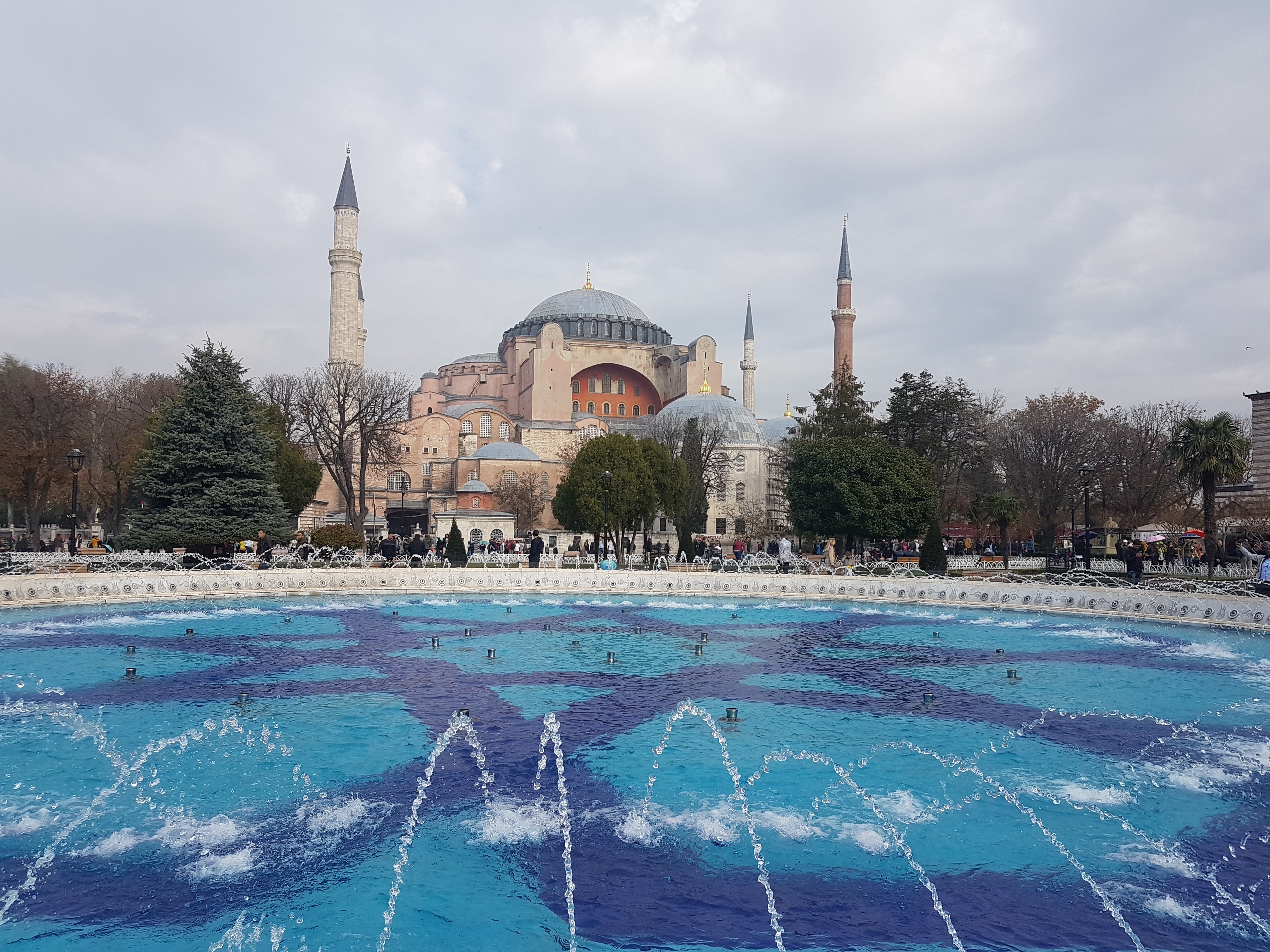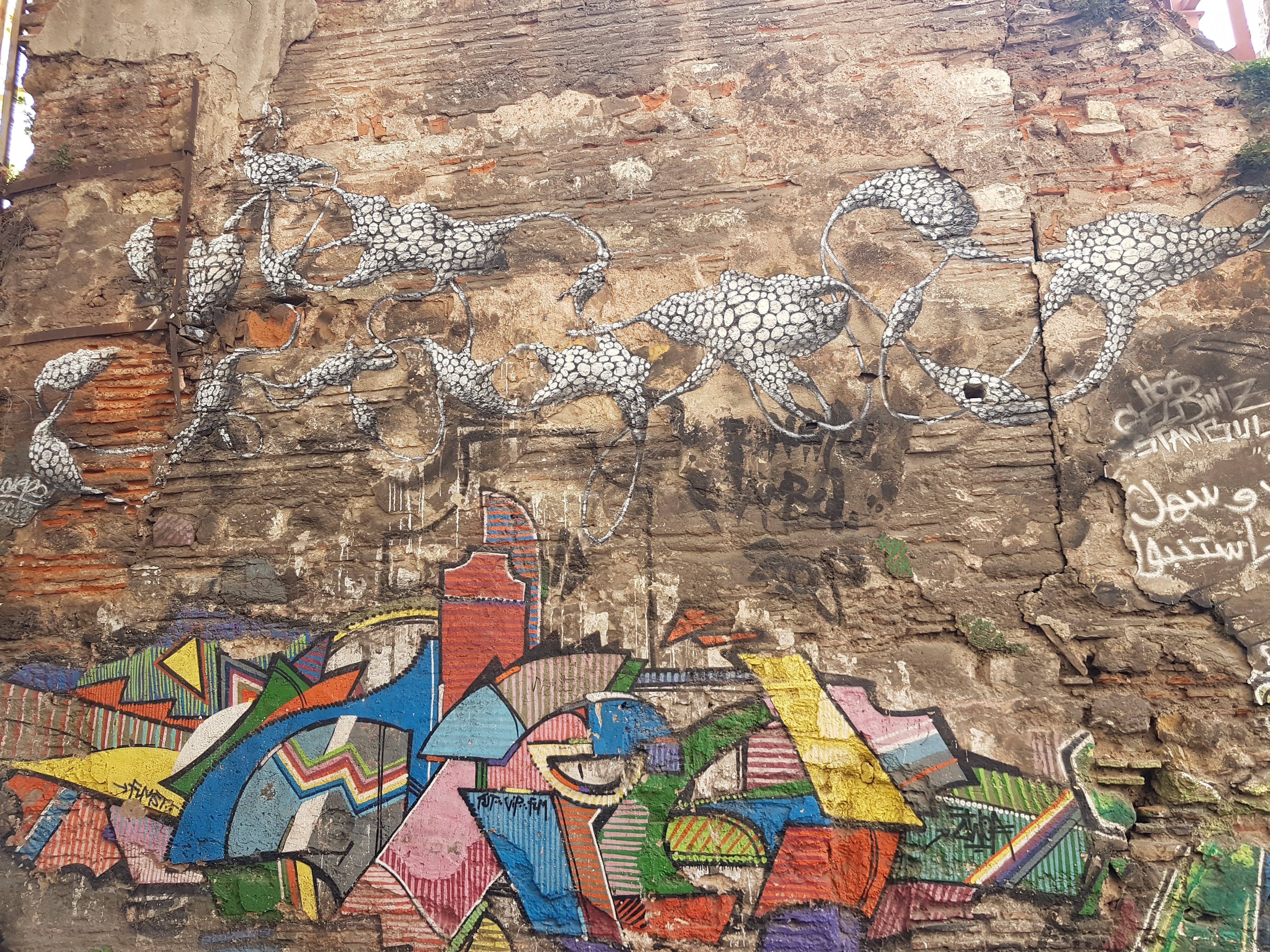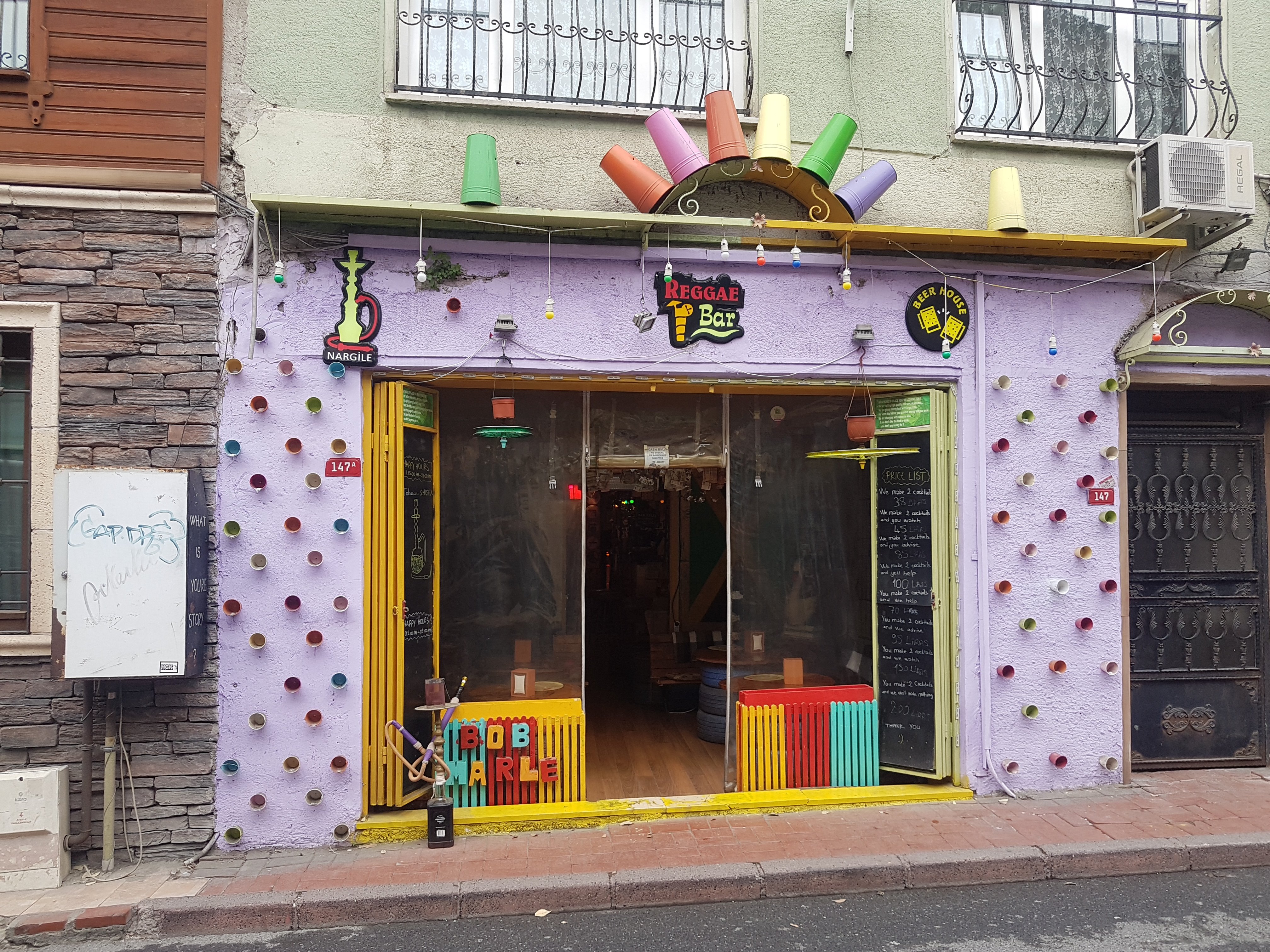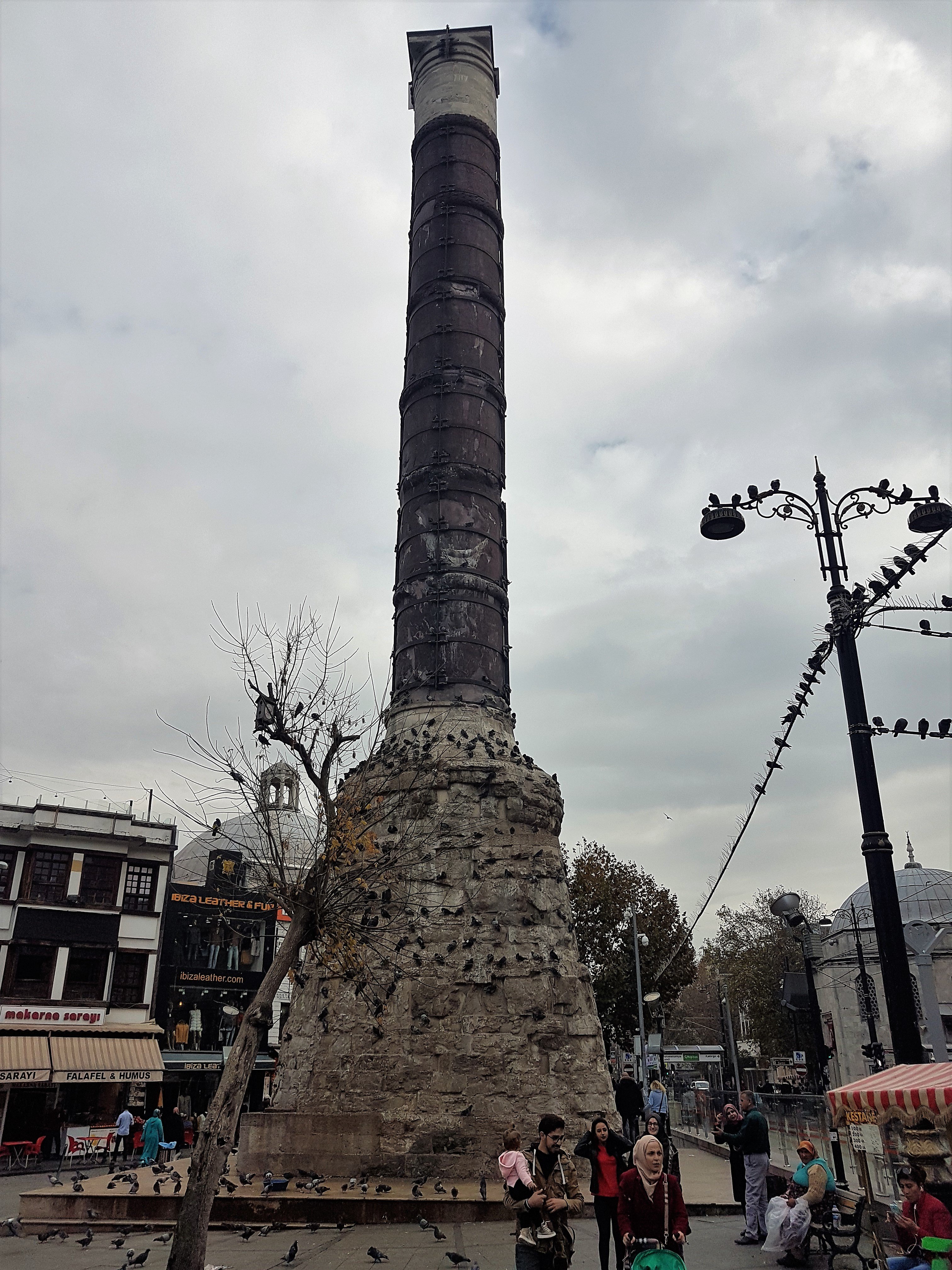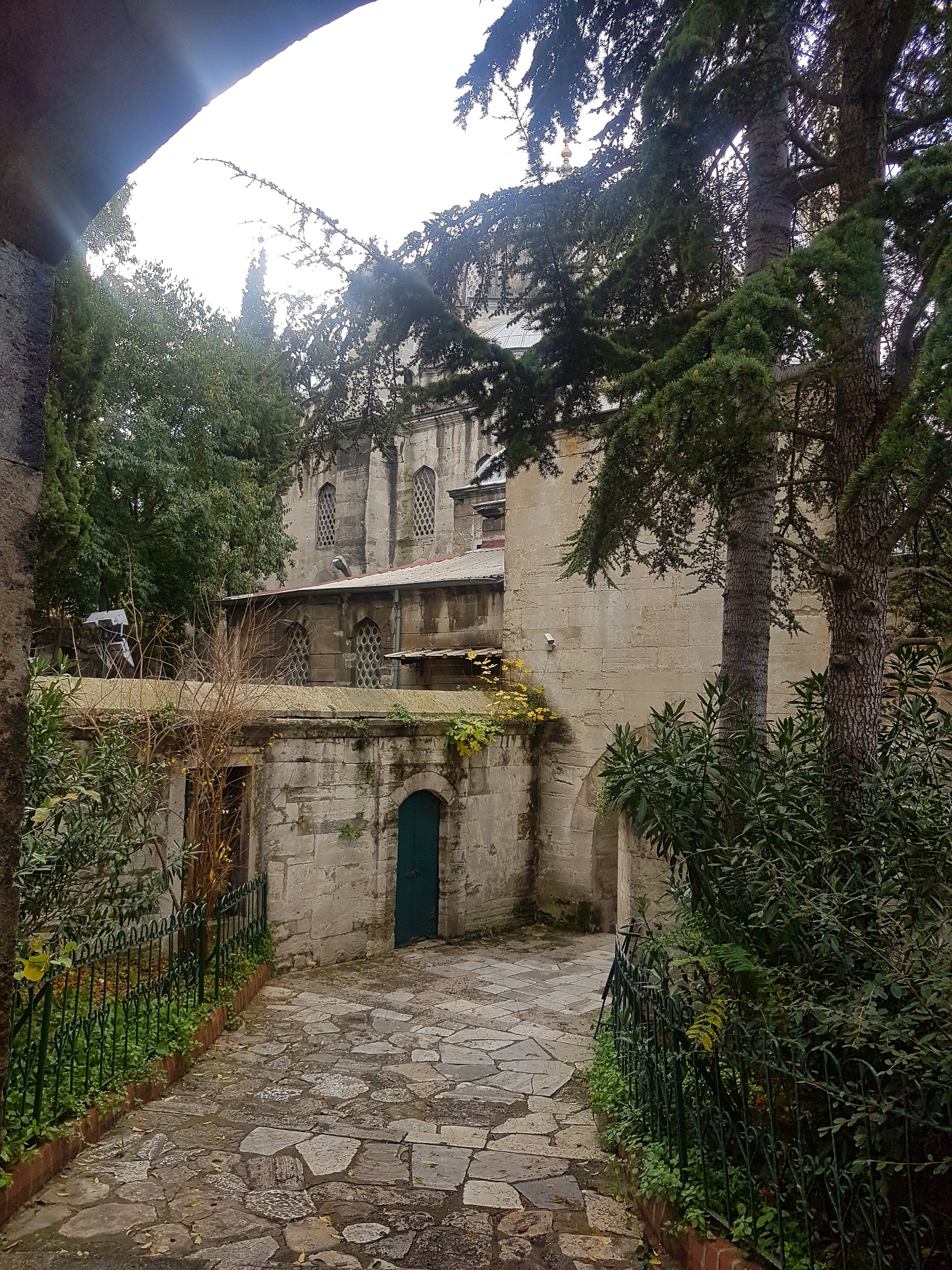Istanbul (Constantinople) is the hub where East meets West and North meets South, a collision of history and cultures, the great city of Constantinople, a city that I wished I had more time to explore. This city was so important and strategic to the Roman Empire that they moved the capitol city from Rome to here, then called Constantinople – named after Emperor Constantine. I only saw the sites for two full days, of the other two, one day was non-stop bucketing down with rain, the other I crashed in bed with a killer migraine.
I had absolutely no plans for Istanbul it was purely a stop gap from Jordan to South Africa so I decided to stay in the heart of the historical part of Istanbul, at Alphonse Hotel. Really nothing fancy, you can walk to all the historical sites easily in Istanbul – if you want to go further the transport system is very good too. The hotel was also close to loads of local restaurants, oh yes, cheap too! I arrived late afternoon, no time to visit anything just a quick walkabout to see the area around the hotel. First evening and the next day…I thought my head was going to explode, I have no idea why I had a migraine from hell, maybe the wine from the previous night, who knows! GRRRRRR! Istanbul was like another first day in Seville, Spain, wishing the world would stop turning, the herd of elephants stop jumping on my head and the sheets were either to hard, soft etc. etc…enough self-pity! Back to Istanbul, my second day (urgh, first actual day of visiting) of site seeing was a quick walk to the old Constantinople city centre by Hagia Sophia and the Blue Mosque – I’ll get to both later.
Basilica Cistern
Like I said, I hadn’t done virtually any planning for Istanbul, I had seen a picture of the Basilica Cistern not too long ago and it looked cool, it would be my first stop of the day. Standing at the entrance of Haiga Sophia the Basilica Cistern is about 100m to the left…follow the crowds! I really should have kept a log of the entrance fees for everything, I did for a while, but my wallet became so full of little slips of paper that I eventually threw it out, I would have remembered if it was expensive so I’m hoping my memory lapse means it wasn’t ?
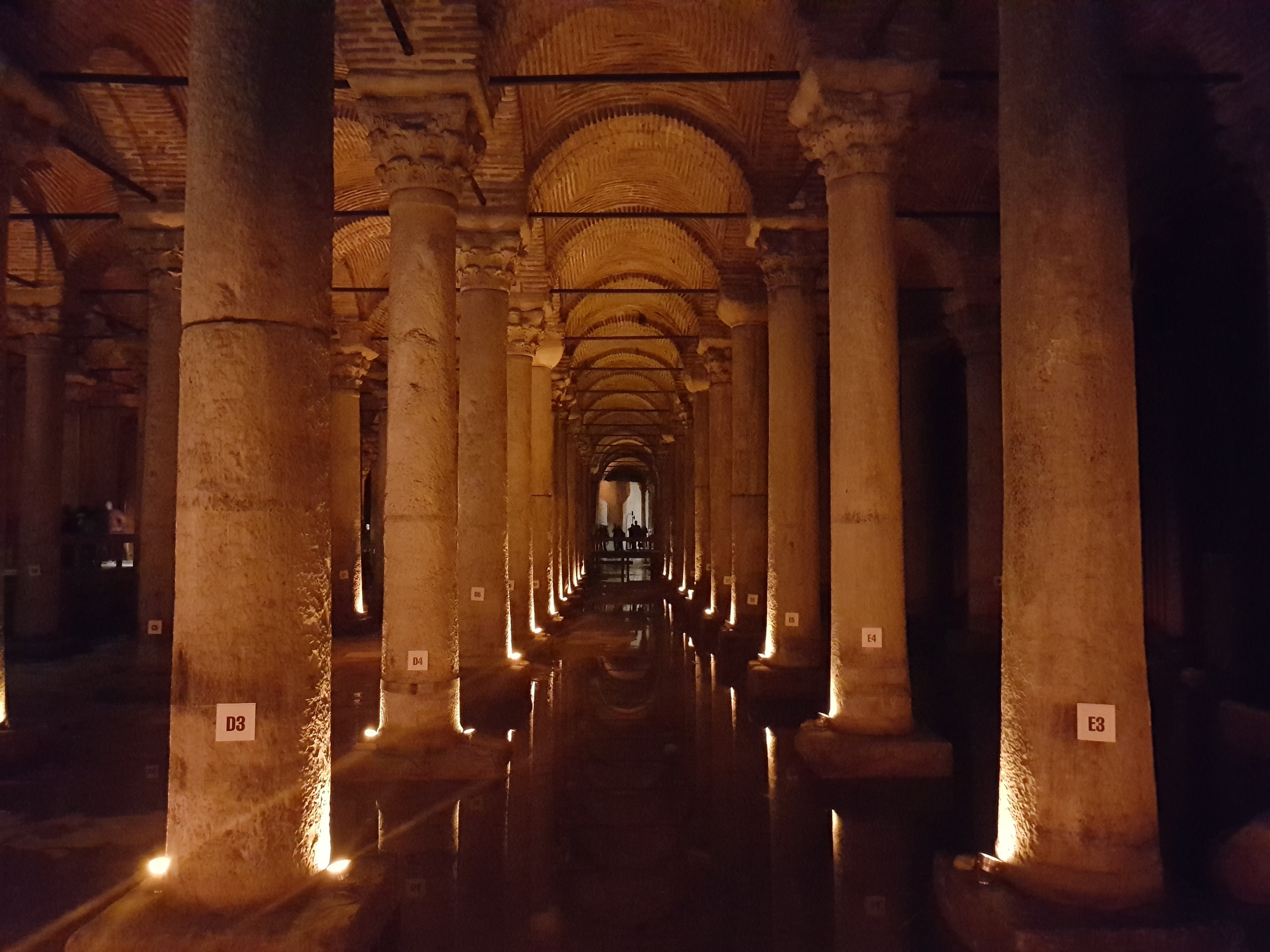
Some background on the Basilica Cistern; water management has been a challenge throughout the ages and I have been lucky to see how unique solutions have been found from Ancient Egypt, Roman, Moor, Nabataean etc. In Constantinople it was no different. Built during the reign of the Byzantine Emperor Justinian I (an interesting character) in the 6th century AD, it was part of a system of hundreds of cisterns, this one being the biggest. Slightly convoluted reason for calling it a Basilica…this area was where the First Hill of Constantinople was located (there were 7) called Stoa Basilica, a large open public square, the cistern was built below it. Before the cistern and public square, this was the location of a large basilica built around the 3rd or 4th century and rebuilt again in the 5th century. Texts show about 7000 slaves were used in the construction of the cistern which was used to filter and supply water to the Great Palace of Constantinople and continued to be use for the Topkapi Palace in the mid-15th century – couldn’t have been constructed badly to be used for a thousand years.
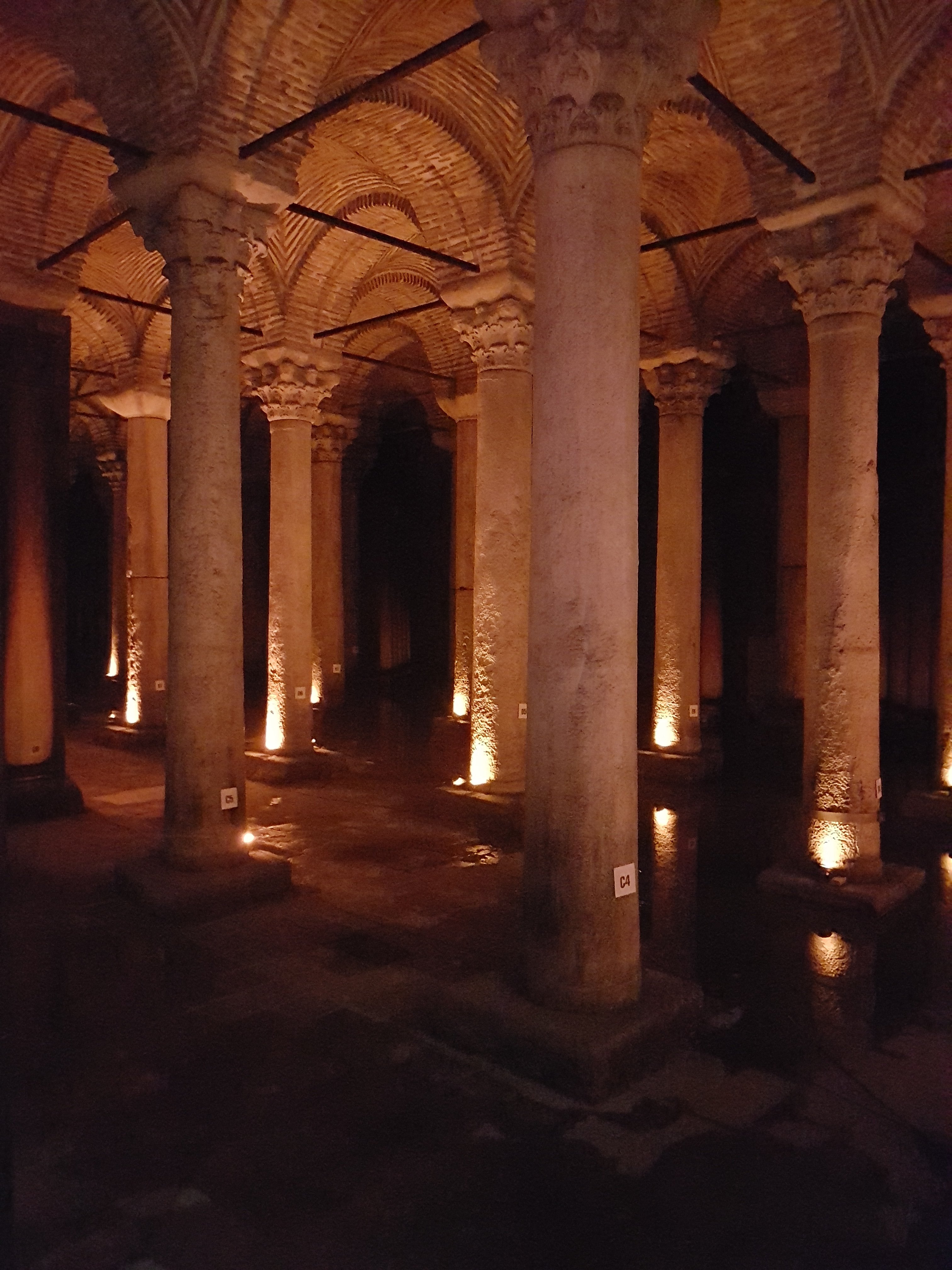
Heading down the stairs you enter what is in essence a man-made cave, a vast one at that, I was expecting a dark, damp mouldy hole cut into the ground held up by some pillars. Instead I found a cathedral like structure of magnificent form, you could put an alter at one end of this immense charming setting and it could easily be a cathedral/basilica. The roof held up by stern, yet thin columns, joined by tiled vaulted ceilings, this could be a place of meditation, a retreat from the city to find your inner peace, but no, it is (was) a water tank.
For anyone going to the Basilica Cistern, go early. My only gripe about the visit was some noisy tourists, the setting dictates for a quiet environment (at least that is my thought), instead some people seemed to think it is a nightclub. I wouldn’t expect people not to talk, I do live in reality, but some people (especially groups of tourists from some parts of the world – I will not say) just don’t seem to give a shit, or understand etiquette, I’d love to know how they feel/react when tourists reciprocate that behaviour when they visit their countries hmmmmm? Conclusion, best get there early to avoid crowds. Enough of my grumpy rant.
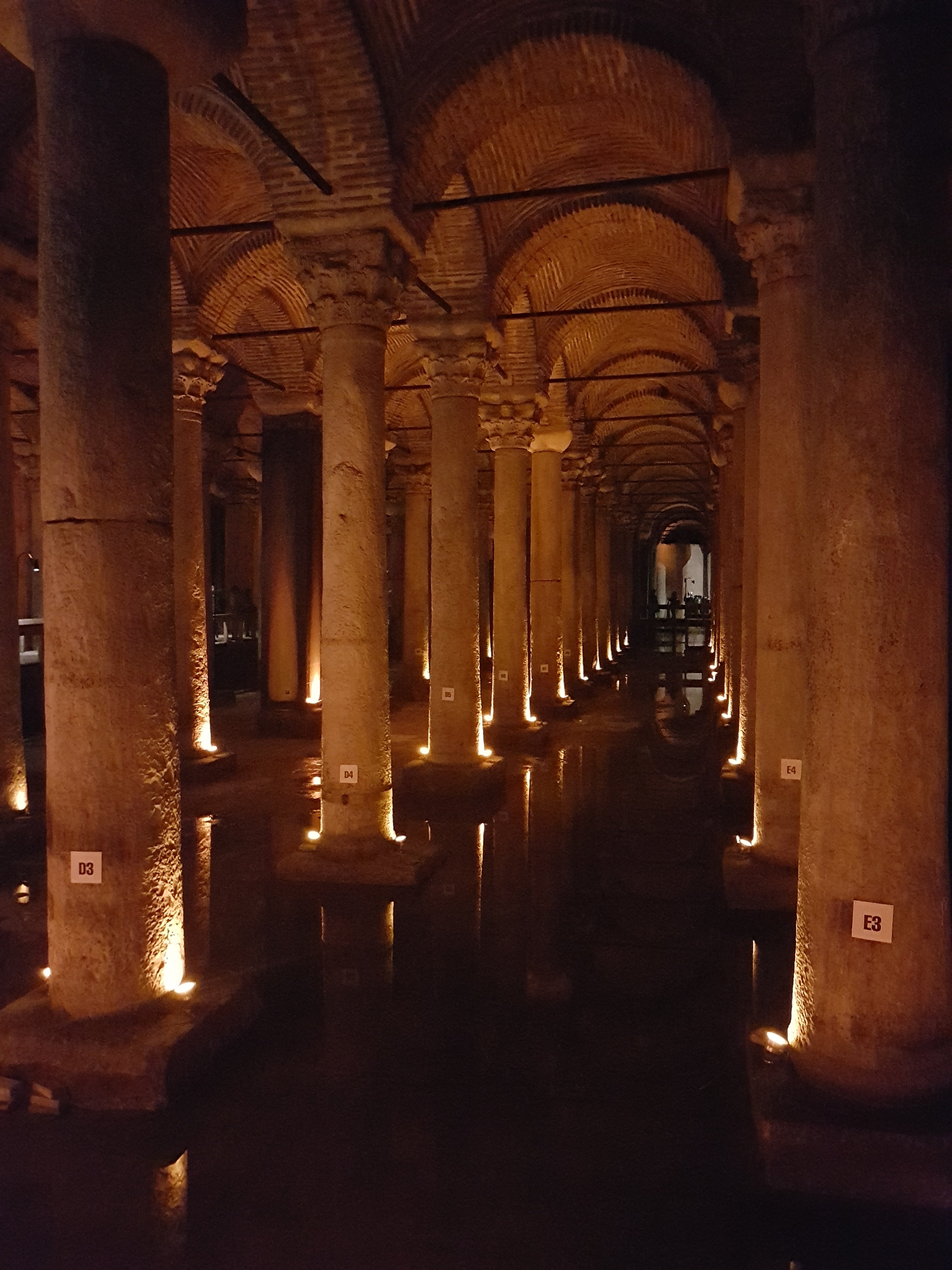
Not quite a rant, I was disappointed my camera wasn’t working properly and could only use my phone; this place is perfect for great photos….with a proper camera. The Basilica Cistern is huge, 138m by 68m and can hold 80 000 cubic meters of water, the 336 columns are 9m high and made of marble with varying capitals style Ionic, Corinthian and a few Doric. One of the more renowned columns is the Hen’s Eye or Weeping column; myth has it that the tears are for those slaves who died whilst constructing the cistern, it also has a resemblance to the columns of the Triumphal Arch of Theodosius.
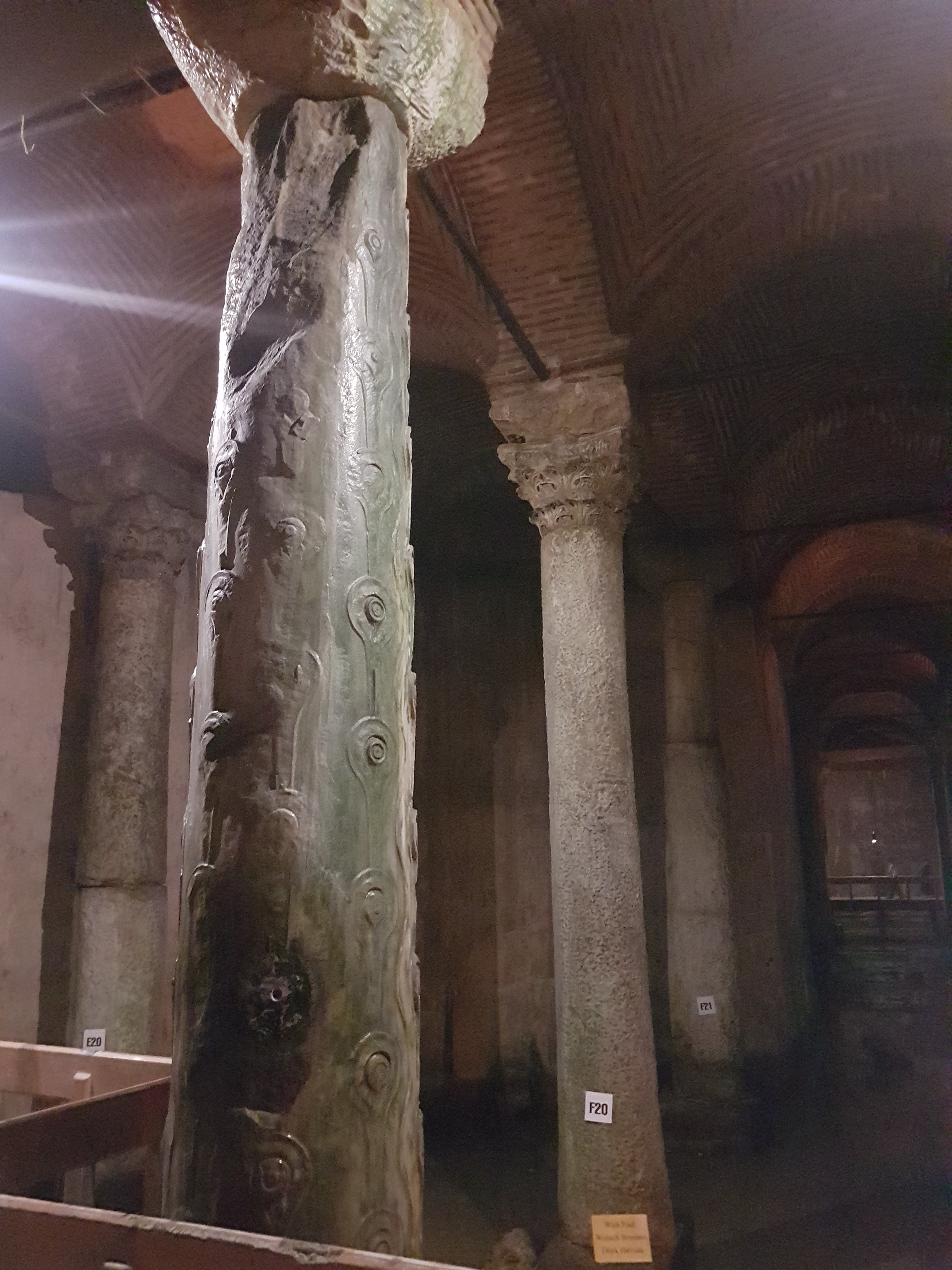
The mix-match of capitals and columns is because they were salvaged from various buildings in parts of the Roman Empire, then adapted to fit where they stand today. The cistern wasn’t filled by rain water, no, it came 19km from the North on aqueducts and labyrinth of pipes. A shadow of its glorious past and has been restored numerous times over 300 years, it is still a spectacular feat of ingenuity and beauty.
Medusa Columns
Reused from an unknown place, folk law has it the one is placed upside-down the other on its side so that you cannot look directly into her eyes and therefore not be cursed by Medusa and turned into stone.
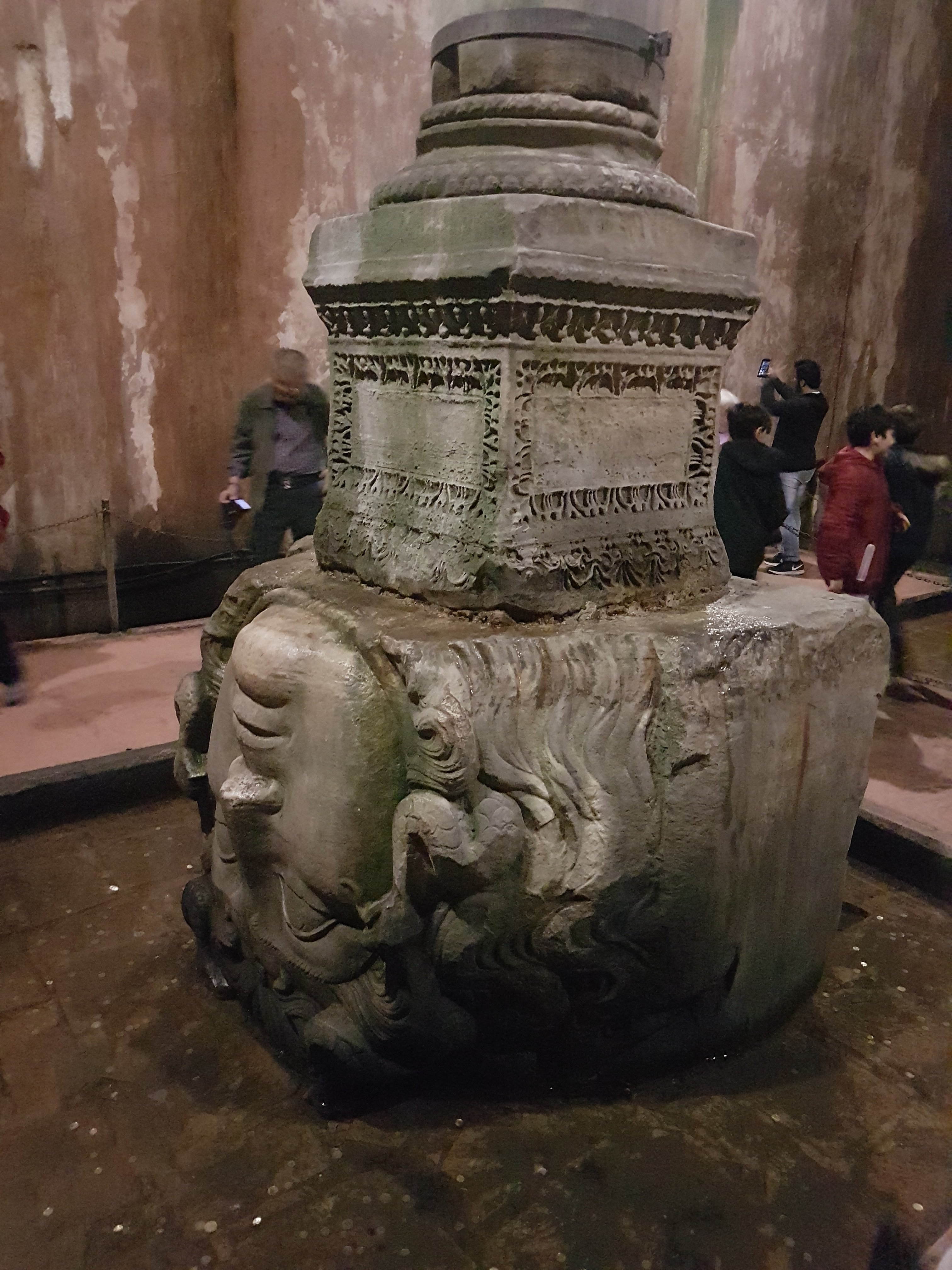

The queue for Hagia Sophia was long and I wasn’t in the mood still feeling a little jaded from the previous day. I ambled along taking any road that looked interesting to get a feel for the area, with the city’s historical significance it still has a touch a mixing pot of people, architecture and vibe, you just don’t know what you’ll come across around the next corner. Following no purpose or direction I wondered through the side of Gülhane Park and up the road to the entrance of Topkapi Palace fronted by a quaint and large park lined with huge trees, hmmm didn’t feel like going to the Palace today, too many people. However, within what would be the palace grounds there is another building, large, yet understated and almost hidden away with most people just walking past, it looked interesting,
Hagia Irene / Hagia Eirene / Saint Irene
Meaning “Holy Peace” this is the only church build by the Romans that wasn’t converted into a mosque and is part of a trio of churches build by Emperor Constantine Hagia Irene, Hagia Sophia and Hagia Dynamis. Gone are the days of its former splendour, now a shell is left with virtually no decoration left to remind you of how ornate the interior would have been. The vast walls creating spaces resembling an industrial setting, concrete and brickwork dominate interrupted by large windows, themselves divided into neat squats. The interior could be an abandoned factory, but it isn’t, no this place is far from bleak, this place screams with character and mood. This is a graceful building striped of any garish colours and over the top decoration, now showing its true self and it is remarkably bold and powerful with intimate areas and subtle moods.
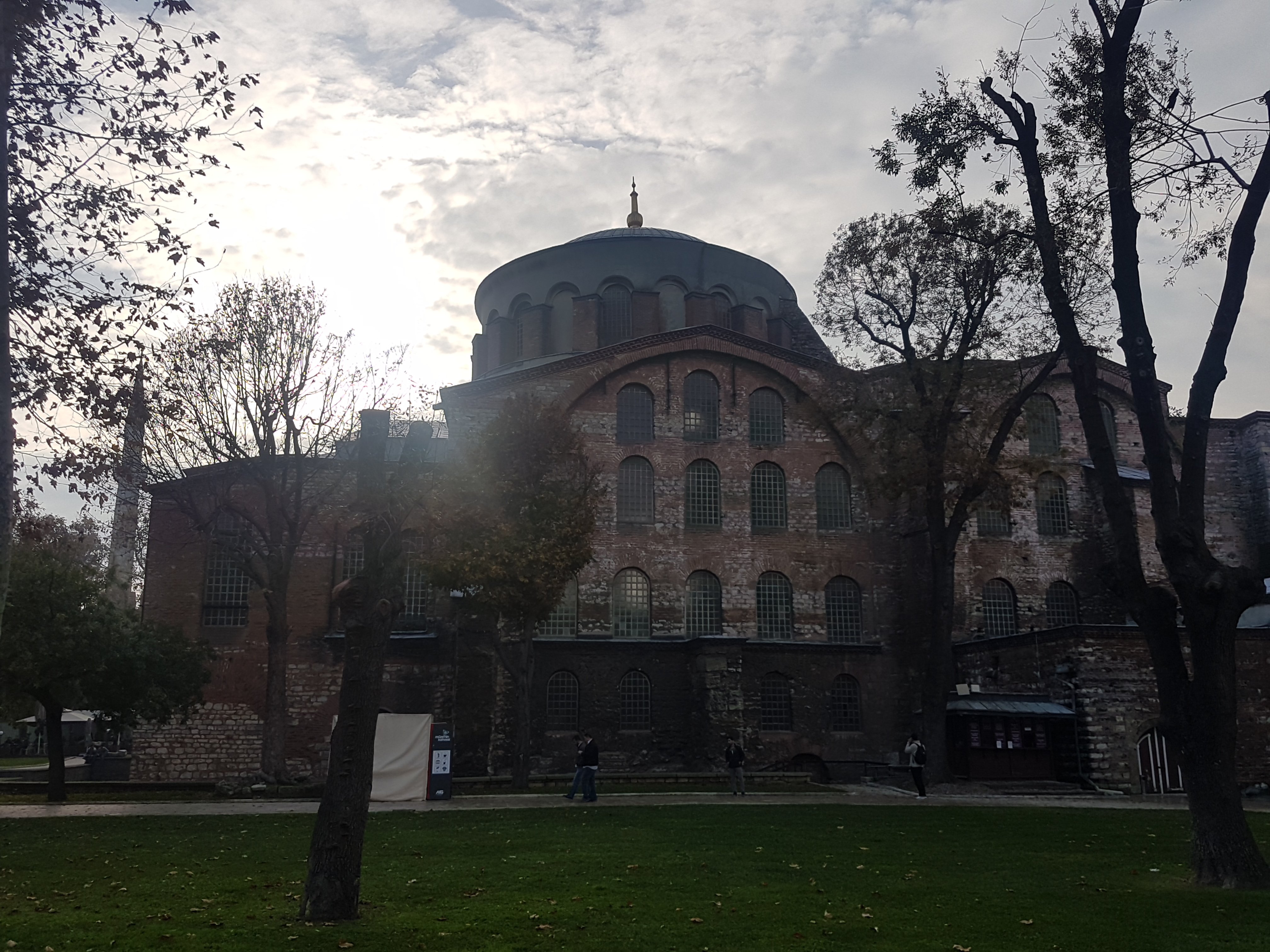
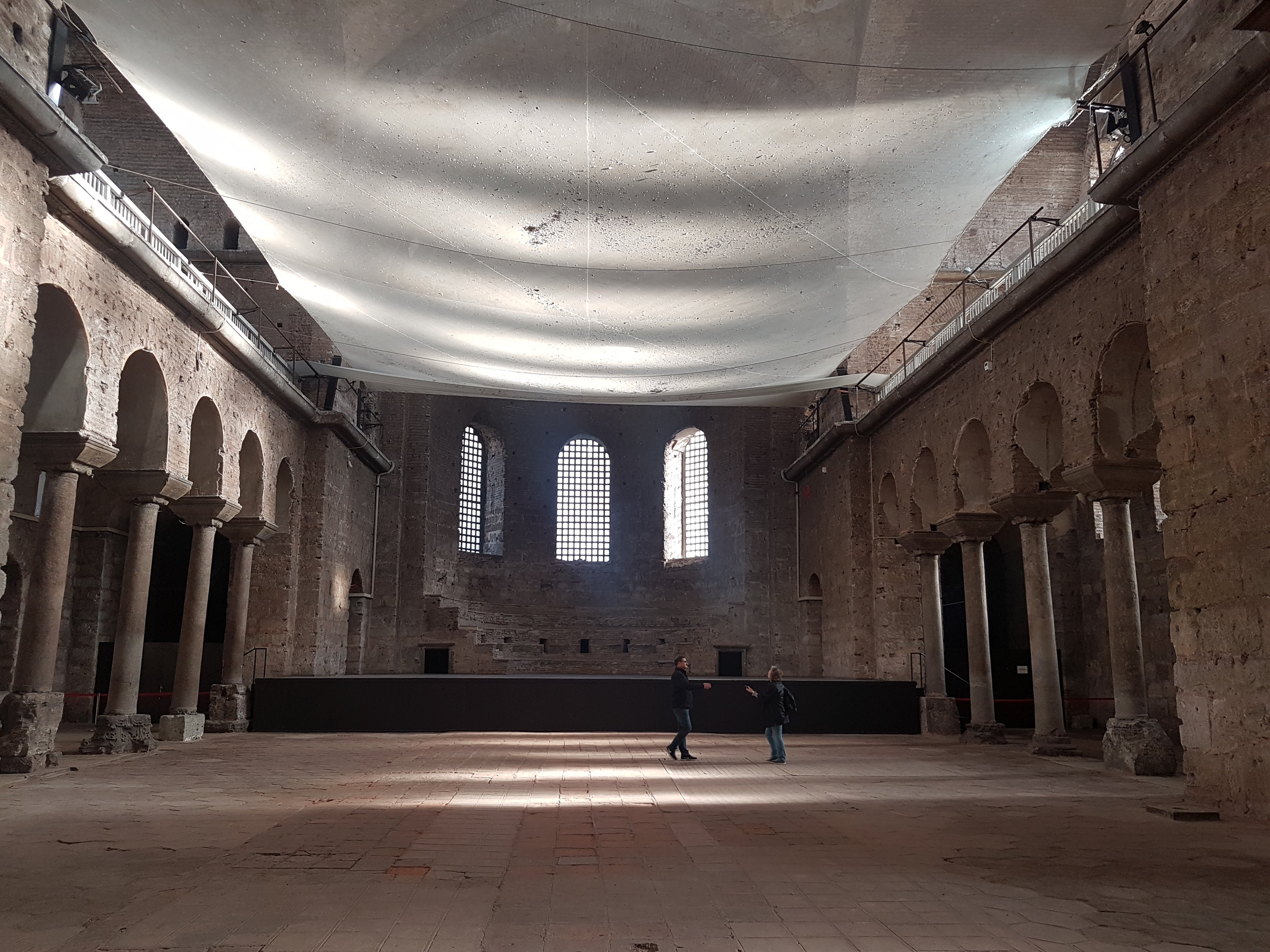
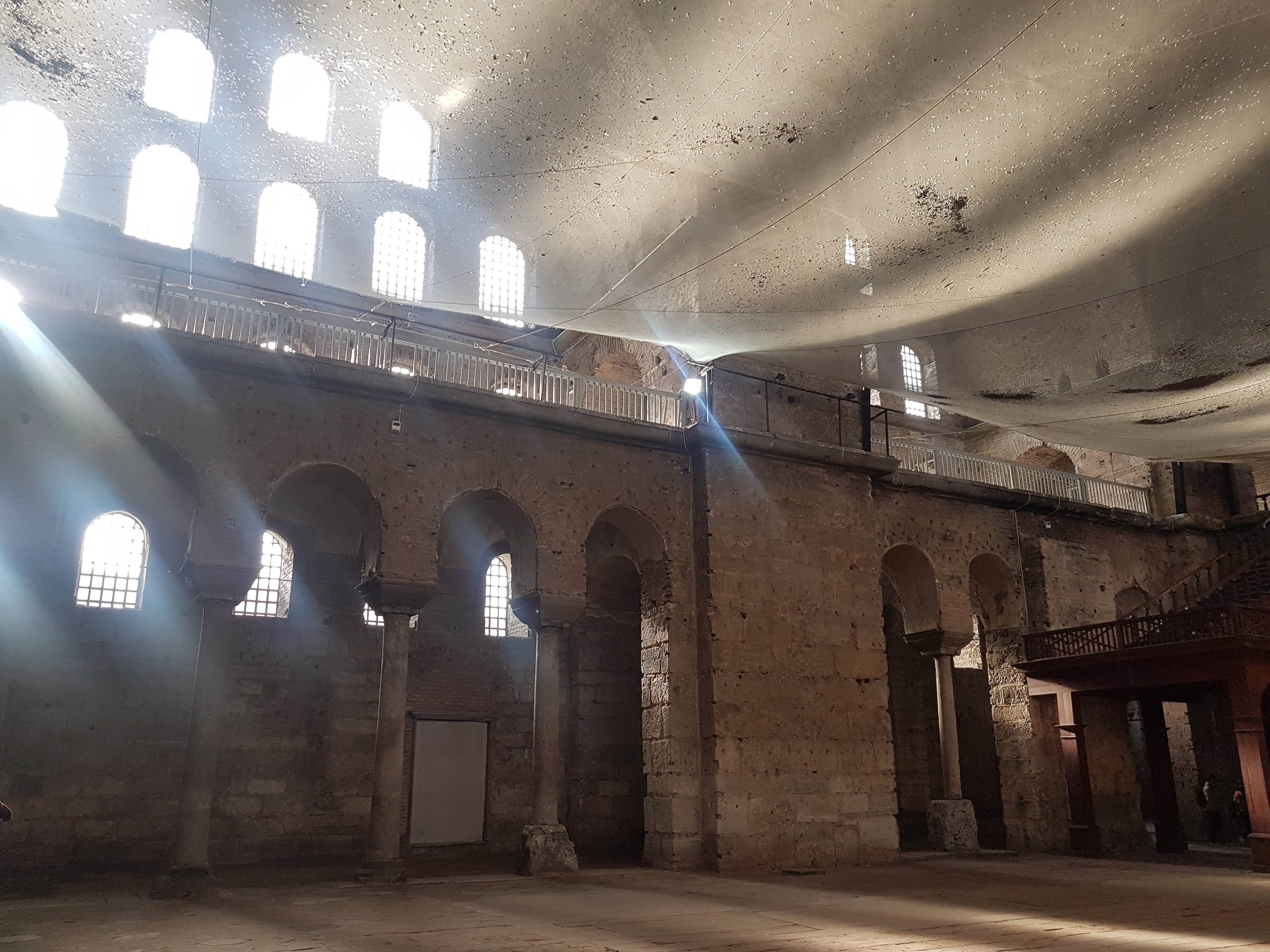
It is no wonder that Hagia Irene is now mostly used for classical music concerts, filling this space could only be justified with music. Although when I was there a net spanned across the ceiling it didn’t deter the emotion this building gives off, the nakedness of the walls baring only that which is necessary somehow makes this place warm and inviting. The upper tier was closed to visitors, I would have like to explore this building more, but was happy with what I saw. For a building that has been neglected for so long and lasted through so much, built in the 4th century, burnt down in the Nika riots and rebuilt in the 6th century and then damaged by an earthquake in the 8th century……this lady has been through a lot and come out all the better for it.
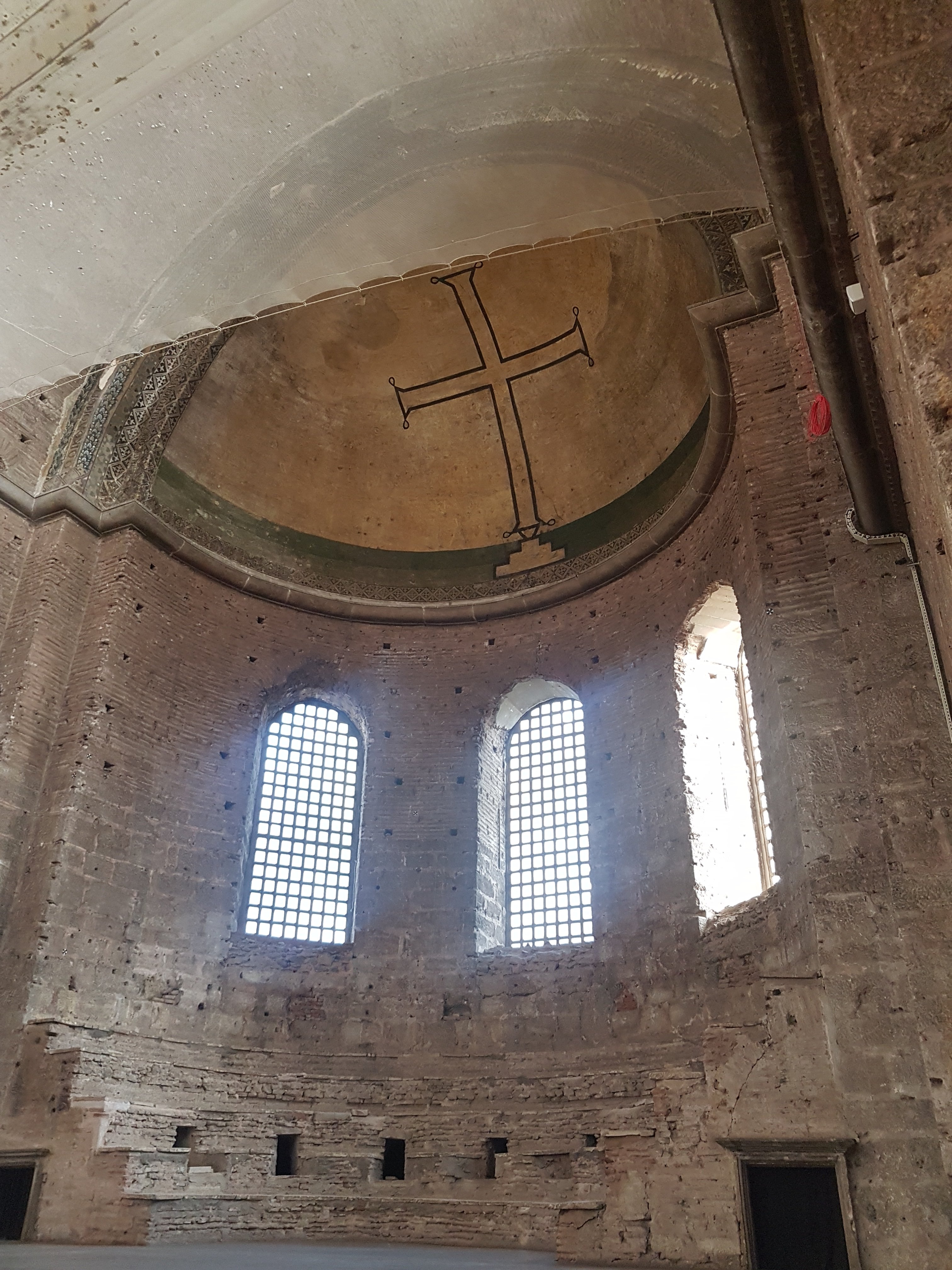
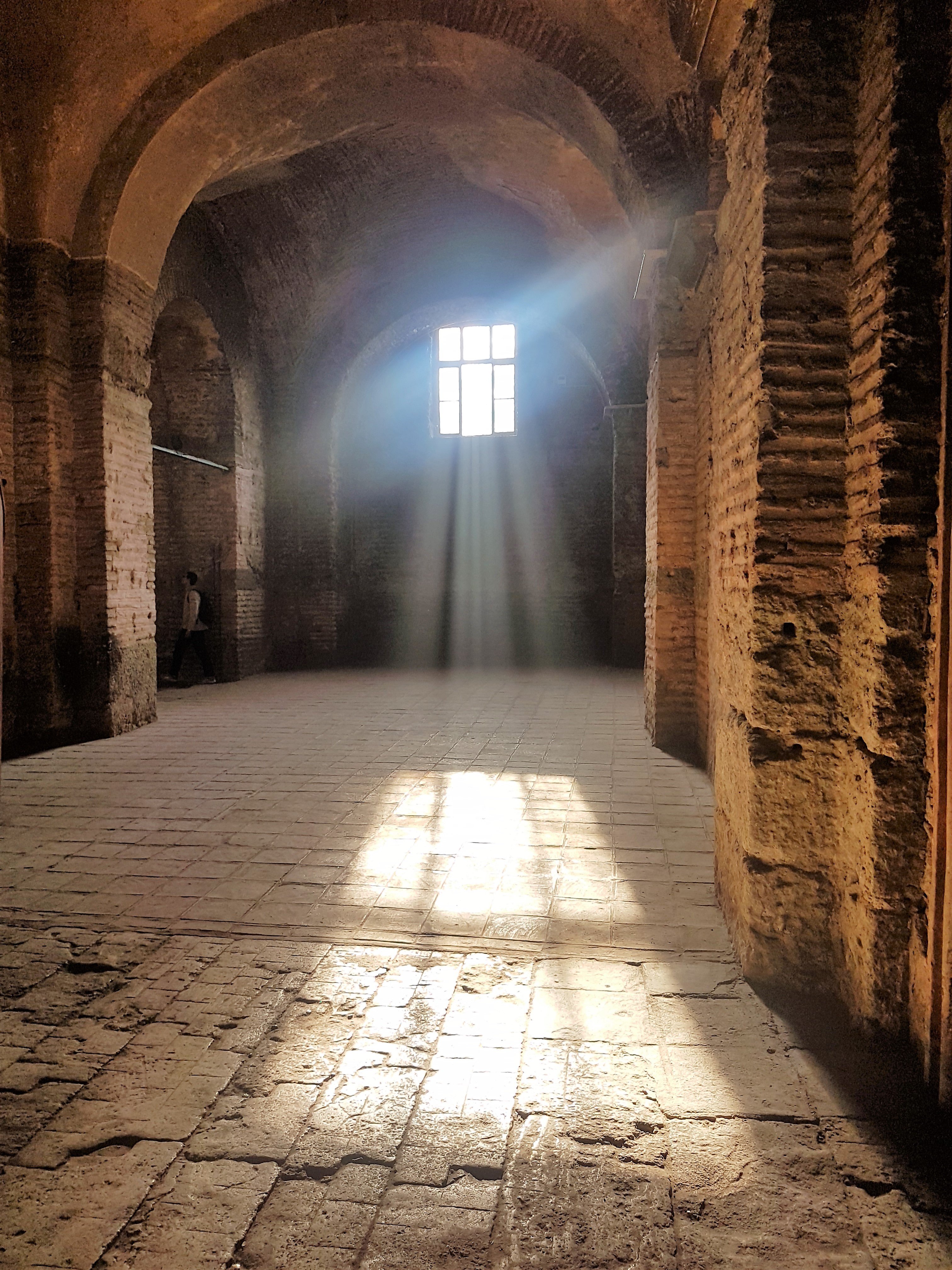
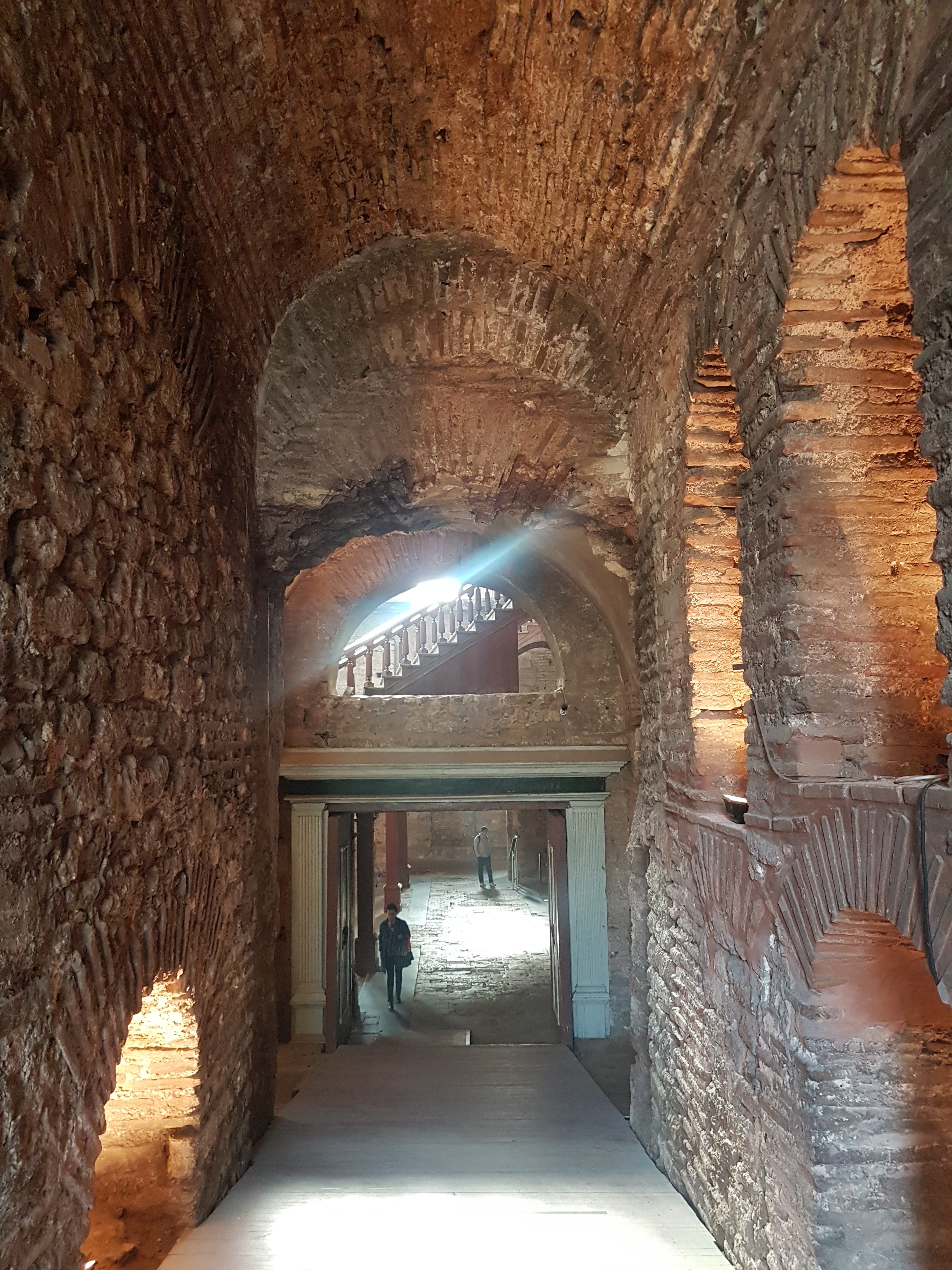
Saltanahmet Square
I hadn’t quite finished for the day, I headed back past Hagia Sophia towards the Blue Mosque where you cannot miss the obelisk protruding into the air. The area is called Saltanahmet Square, running off centre from Haiga Sophie and past the Blue Mosque. It reminded me of a Roman Circus/Hippodrome because of its length and the centred “decorations” of two obelisks and a copper spryer (I’ll get into these a little later). Well, either my eye for Roman archaeology is getting blood good or I was just luck, either way it reminded me of a Roman Circus because it used to be one!
Obelisk of Theodosius
Called so because it was erected by Emperor Theodosius I in the 4th century AD, it was however an obelisk of the Egyptian Pharaoh Thutmose III (circa. 1400 BC) at Karnak Temple – removed from the temple by Emperor Constantius II. The Obelisk is made or red granite and the pedestal of marble, the four bronze cubs between these are original from the time the Romans transported &/or erected it. Considering how old the obelisk is compared to the pedestal it is in much better condition with the pedestal being repaired a few times too!


Serpent Column / Serpentine Column / Plataean Tripod / Delphi Tripod
Having many names because of people renaming it over a thousand years, it came from an ancient Greek sacrificial tripod that came from Delphi. Like so must of Constantinople (Istanbul) it was removed by Emperor Constantine in the 4th century. It used to be 8m high with three serpent heads (one of the heads is in the Istanbul Archaeology Museum around the corner – I go there the next day) and remained intact till the 17th century, it is over 2500 years….why and how it was broken I have no idea!
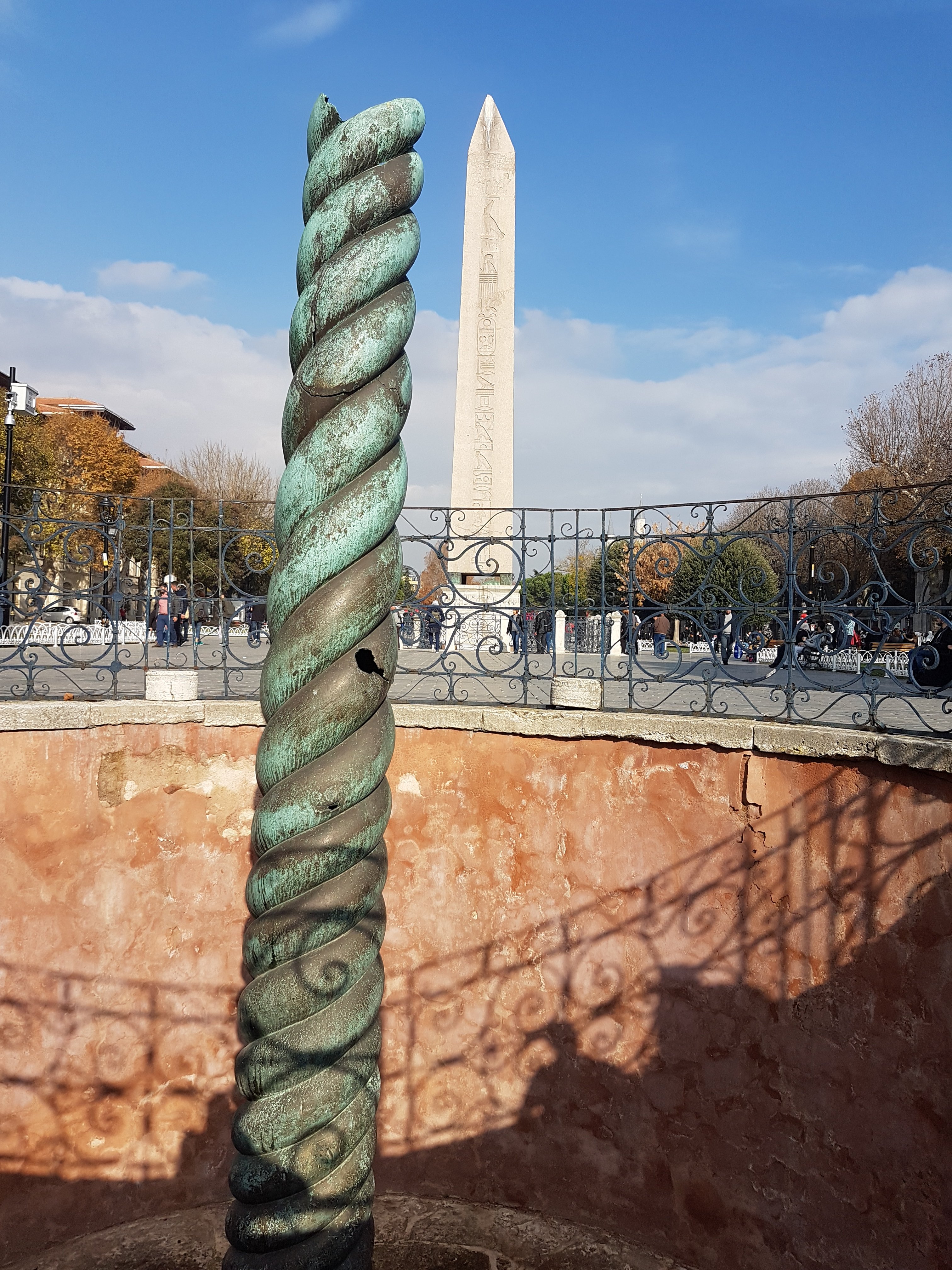
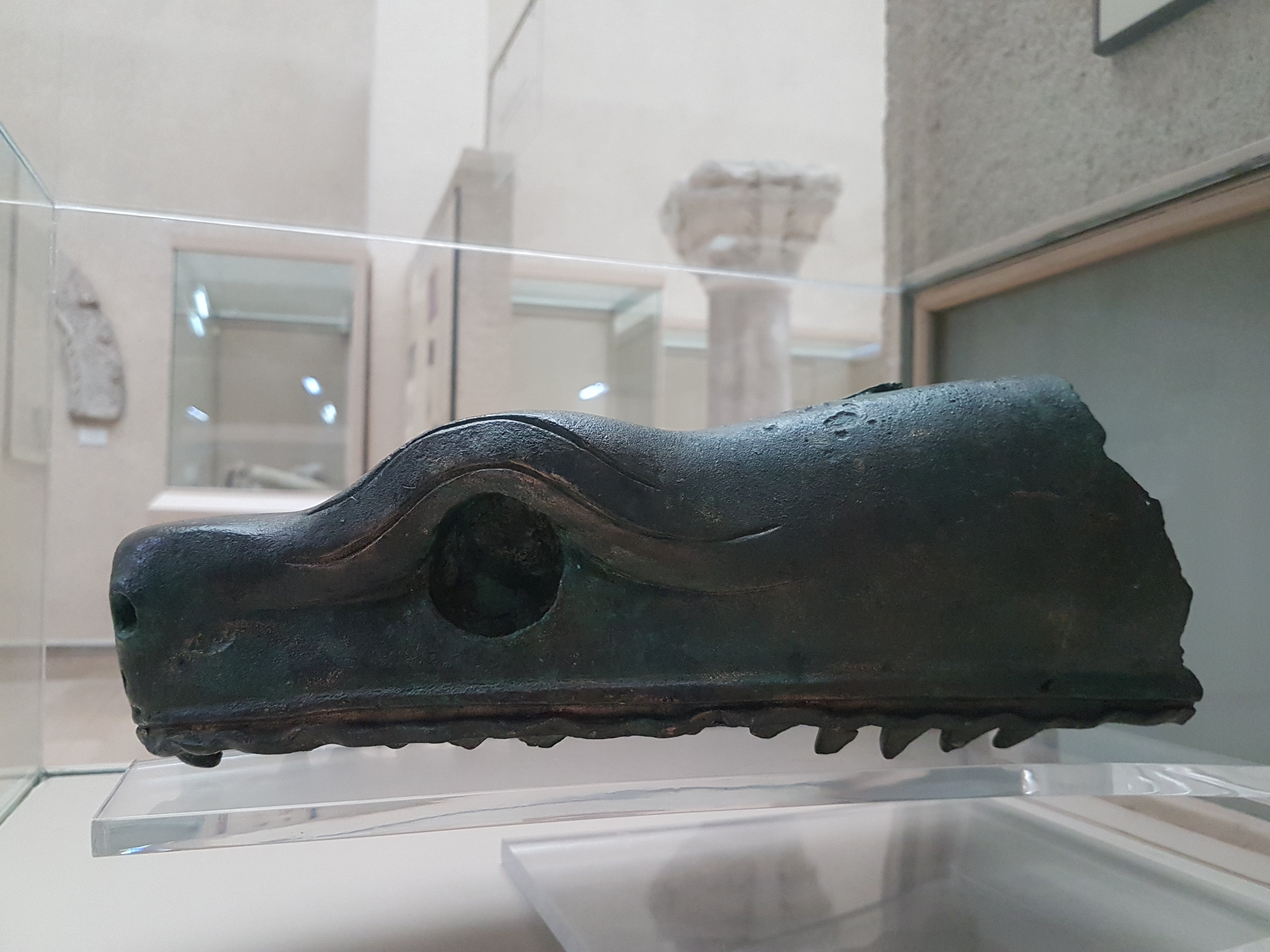
It seems an insignificant piece compared to the obelisk and being surrounded by the massive historical buildings, but it is in fact an extremely rare and precious bit of archaeology. Its provenance is undeniable, being part of a Greek military trophy commemorated to Apollo for the Greek victory over the Persians at Delphi.
My first day was over, my jadedness was fading thanks to an easy day filled with some fantastic sites, I was liking Istanbul, and looking forward to the next day. It used to be known as the great city of Constantinople, the name has changed but Istanbul is still great!
PS. just a reminder that all my photos were taken with my phone!
Here are some additional pictures form my first day. Before I got to Istanbul/Constantinople ( ? ), I was in Jordan, here is my last post on Jordan – Get wet at Wadi Mujib, floating on the Dead Sea
